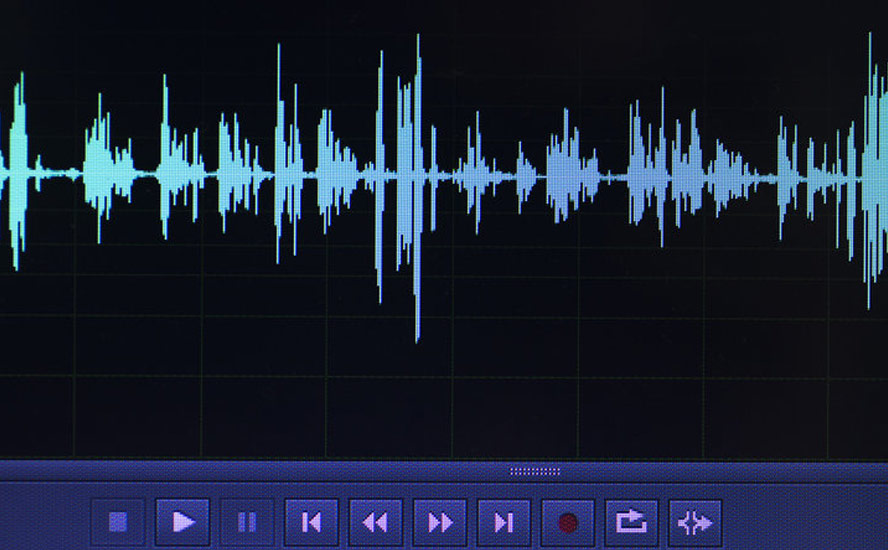Why the record US trade deficit is good for commodities

2019.03.08
On Monday a headline that must have put Donald Trump in a foul mood screamed out from financial pages: “Trade deficit surges to record high”.
The president’s nemesis was supposed to be tamed by slapping tariffs on the biggest culprit – China – and any other country that got in the way of making US exports greater than imports, including Canada, Mexico and Europe.
As it turns out, Trump was wrong. Billions in import duties haven’t reversed trade flow’s, but made the discrepancies worse. According to the US Department of Commerce, the country’s trade deficit was $59.8 billion in December, the widest it’s been in a decade, and $891.3 billion for 2018, the biggest annual trade gap in goods (difference between goods imports and exports) ever.
Adding services to goods lessens it to $621 billion for the year but that’s still a 12.5% increase in the trade gap from 2017.
How ironic that the record would be set while the economic policy of the man sitting in the Oval Office is rooted in getting Americans to buy American.
It isn’t any better in Canada, where plummeting energy exports pushed the trade deficit in December to $4.6 billion, the highest monthly total on record.
This article will take a look at the reasons for Trump’s trade policy failure and what it could mean for commodities.
The mighty buck
To get to the heart of the issue, we need to analyze how the dollar did in 2018, because currency strength is the most important determinant of trade flows. Take a look at the US dollar index chart below. For the first quarter of 2018, the greenback fell, reaching of low of 89.44 on March 18.

From April onward, the buck gained strength against a basket of other currencies, with the US dollar index (DXY) rising from April until year-end, when it was 96.18.
This is the opposite of US President Trump’s plan to keep the dollar low, in order to make exports cheaper. Trump wants to bring jobs back to the US after many were exported abroad to take advantage of lower labor costs, and therefore rebuild the US manufacturing sector.
What happened to keep the dollar high? It was mostly the purchase of US Treasuries, a safe haven. That increased demand for US dollars. Instability was made worse last fall with the correction in stock markets, and uncertainty that UK Prime Minister Theresa May could pass a Brexit deal through the House of Commons.
Foreign investors purchased some $26 billion of T-bills in May, for example, driven by fear of a trade war. Investors were also drawn to T-bills due to their higher yields which competed with the average S&P dividend yield.
The dollar was also lifted by raising interest rates. Since it began hiking rates in 2015 following the zero-rate quantitative easing policy, the US Federal Reserve has hiked rates seven times. More raised were planned for 2019, but Fed officials in December backed off, as growth everywhere outside the US, including China, grinds slower. US interest rates currently sit at 2.5%.
So the high-dollar policy we know hasn’t been good for exports, was caused by safe-haven Treasury buying and interest rate increases. What else was behind it?
Spending spree
When Trump announced his $1.5 trillion tax cut, Americans reached for their credit cards. Cutting taxes and regulations has made the US economy outperform the rest of the world; the perception of economic strength fuels consumer spending, plus the reality in terms of record-low unemployment and consistently low inflation (currently at about 1.5%).
With American citizens and companies in a buying mood, whereas other countries were tightening the purse strings, the US was bound to suck in more imports, even goods from China that became more expensive due to the tariffs.
What effect did the trade war have on the trade deficit? Weren’t tariffs on Chinese goods supposed to stem the flow? October’s trade numbers say the opposite. Despite tariffs on steel, aluminum and hundreds of billions of other Chinese imports, the trade deficit with China was 11.4% higher January to October, versus the same period in 2017, PBS reported.
The Chinese bought less soybeans, metals and cars from the States. US soybean exports dropped 46.8% in October, which surely added to the trade deficit.
US car imports were reportedly at all-time highs in the 2018 trade deficit figures, which fits with the perception that the economy is doing well. When you think your job is secure, a lot of people go car shopping. William Watson, a columnist at the Financial Post, suggests another reason might have been European automakers pushing sales to the US in 2018 in anticipation of Trump levying duties on imported vehicles.
It wouldn’t be a stretch to argue that a lot of American companies that buy from China likely stocked up in 2018 to avoid further import taxes.
One other point is worth mentioning. Researchers at the New York Federal Reserve who examined the effects of trade wars found that “tit for tat” tariffs that make goods more expensive can actually cause declines in both imports and exports. When this happens, the trade deficit can’t easily improve, as reported by PBS.
Low dollar redux?
The question now is, will Trump keep hammering away at the trade deficit, by returning to the low-dollar policy he favors? It certainly appears likely. The Trump Administration has already succeeded in pressuring the US Federal Reserve from backing off further increasing interest rates, which would push up the dollar. In fact, there is now talk of even lowering rates. Former Fed Chair Janet Yellen said so when asked for her thoughts on whether the central bank will pursue a tight or loose monetary policy this year.
Interviewed on CBNC, Yellen said weakened economies in China and Europe are a threat to the strong US economy. If that continues, a rate cut might be in the cards.
“Of course it’s possible. If global growth really weakens and that spills over to the United States where financial conditions tighten more and we do see a weakening in the U.S. economy, it’s certainly possible that the next move is a cut,” she said. “But both outcomes are possible.”
As for the dollar, Trump last weekend was again complaining the dollar is too strong and referred to current Fed Chair Jerome Powell as someone “who likes raising interest rates.”
He has also argued that the rate increases are hurting the US economy and blamed the Fed for the October stock market sell-off and General Motors’ plans to close plants and cut over 14,000 jobs, according to the Washington Post, via CNBC.
Of course Trump doesn’t have any real power over the Federal Reserve except to appoint the Chairman and the seven governors; the central bank is supposed to stay above politics. More on this can be found at Trump vs the Fed: Who wins?
For his part, Powell said in December he sees more interest rate hikes over the next couple of years. It’s impossible to predict that far out, but traders of US interest rate futures are reportedly expecting a rate cut in 2020.
Could another quantitative easing program be far behind? If the trade deficit continues to climb, inflation stays below 2%, and there are signs of an economic slowdown in the US, we can’t rule it out. In December the yield curve (short term interest rates on Treasury bills were higher than long-term rates, indicating a loss of confidence in the economy, long-term) inverted, which historically has meant a recession is around the corner. Right now the rate on the 10-year T-bill is above 2-year rates, but if the dreaded inversion occurs again, all bets are off.
Commodities
A weak dollar usually means stronger commodities prices. Because the USD is the reserve currency and commodities are traded in dollars, the value of the dollar is of crucial importance in determining the value of the commodity in question.
For gold, a weak dollar usually causes a rise in the gold price. We know that negative real interest rates (interest rates minus inflation) are bullish for gold. That would occur if the rate of inflation goes above interest rates. We’re not there yet, but if the Fed does cut rates and there is another QE, which is really printing money to buy bonds and therefore inflationary, we could be looking at another up-leg in the gold price.
A weaker dollar also means stronger base metals prices especially for the materials that are used for building infrastructure. This includes desperately needed bridges, public buildings, power stations, dams etc. in the US, much of the developing world, and China’s Belt and Road Initiative which along with needing billions of tonnes of copper, is going to require a lot of steel containing zinc.
Conclusion
On the face of it, the ballooning trade deficit is negative for the US economy. How can buying more goods and services than your country exports be a good thing? Because consumers have money in their jeans they’re willing to spend on imported foreign goods. The president may not like that, but would he rather have the opposite?
As for what happens next, it appears the Fed has backed off any plans for more interest rate increases, which should keep a lid on the dollar, for the time being. The real metric to watch is GDP growth rates. If growth in China and Europe keeps slowing, their purchases of US goods will also slow, which will hurt the US economy and worsen the trade deficit. That is a real bug-bear of Trump, so as long as he stays in power, he will probably keep pressuring the Fed to keep interest rates static or even lower them, to achieve his goal of a low dollar.
Both scenarios would be good for commodities.
Richard (Rick) Mills
Ahead of the Herd Twitter
Ahead of the Herd FaceBook
Legal Notice / Disclaimer
This document is not and should not be construed as an offer to sell or the solicitation of an offer to purchase or subscribe for any investment. Richard Mills has based this document on information obtained from sources he believes to be reliable but which has not been independently verified. Richard Mills makes no guarantee, representation or warranty and accepts no responsibility or liability as
to its accuracy or completeness. Expressions of opinion are those of Richard Mills only and are subject to change without notice. Richard Mills assumes no warranty, liability or guarantee for the current relevance, correctness or completeness of any information provided within this Report and will not be held liable for the consequence of reliance upon any opinion or statement contained herein or any omission. Furthermore, I, Richard Mills, assume no liability for any direct or indirect loss or damage or, in particular, for lost profit, which you may incur as a result of the use and existence of the information provided within this Report.
Legal Notice / Disclaimer
Ahead of the Herd newsletter, aheadoftheherd.com, hereafter known as AOTH.Please read the entire Disclaimer carefully before you use this website or read the newsletter. If you do not agree to all the AOTH/Richard Mills Disclaimer, do not access/read this website/newsletter/article, or any of its pages. By reading/using this AOTH/Richard Mills website/newsletter/article, and whether you actually read this Disclaimer, you are deemed to have accepted it.

























